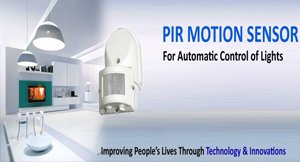91-11-45680580 & 9811138340.
Energy Audit
An energy audit is a preliminary activity towards instituting energy efficiency programs in an establishment. It consists of activities that seek to identify conservation opportunities preliminary to the development of an energy savings program.
The Role of an Energy Audit
To institute the correct energy efficiency programs, you have to know first which areas in your establishment unnecessarily consume too much energy, e.g. which is the most cost-effective to improve. An energy audit identifies where energy is being consumed and assesses energy saving opportunities - so you get to save money where it counts the most.
In the factory, doing an energy audit increases awareness of energy issues among plant personnel, making them more knowledgeable about proper practices that will make them more productive. An energy audit in effect gauges the energy efficiency of your plant against “best practices”. When used as a “baseline” for tracking yearly progress against targets, an energy audit becomes the best first step towards saving money in the production plant.
Contents of an Audit
An energy audit seeks to document things that are sometimes ignored in the plant, such as the energy being used on site per year, which processes use the energy, and the opportunities for savings. In so doing, it assesses the effectiveness of management structure for controlling energy use and implementing changes. The energy audit report establishes the needs for plant metering and monitoring, enabling the plant manager to institutionalize the practice and hence, save money for the years to come. The energy audit action plan lists the steps and sets the preliminary budget for the energy management program.
1. Analysis of energy use
Identifying where energy is used is useful because it identifies which areas the audit should focus on and raises awareness of energy use and cost. The results of the analysis can be used in the review of management structures and procedures for controlling energy use.
Analysis of energy use can be done by installing submeters in different plant locations to pinpoint actual energy usage per area. This is a good source data for allocating energy use. The plant manager can also list all equipment used and the corresponding operating hours. With this information, he can create spreadsheet information and generate charts useful for analysis.
Important Points to Consider When Collecting Site Load Data
2. Identification of energy projects
Opportunities for energy savings can range from the simplest, such as lighting retrofits, to the most complex such as the installation of a cogeneration plant. The important thing to remember is to focus on major energy users and areas. Always apply the 80/20 rule, focus on opportunities that provide 80% of the saving but require 20% input. After the preliminary identification of opportunities, spend more time on those which have shorter payback periods.
3. Cost benefit analysis
The identified energy conservation opportunities should be analyzed in terms of the costs of implementing the project versus the benefits that can be gained. If you want to, say, install a heat plate exchanger to recover waste heat, you need to calculate the total cost of installation and compare that with the savings you will derive from recovering waste heat. It makes sense to go on with the project if there is a net positive benefit from the project.
4. Action plan to set implementation priority
After passing the cost benefit test, an action plan should be developed to ensure that the opportunities identified are implemented. The action plan should include all the major steps for implementing the opportunity as well as the people responsible. Furthermore, there should be a plan for monitoring the results.

Hamilton Electronics Pvt. Ltd. , is an ISO 9001 : 2000 Certified Company , engaged in the manufacturing of Switches & Sensors for Security Alarm Systems , Magnetic Door Contacts, Magnetic Security Switches and host of other Sensors.

PIR Sensors passive infrared detector that will give you the edges over the competition and secure your business contract in today's price oriented market. The company has a consistent record of growth and expansion with fast increasing sales turnover since its inception.

Float Sensor is an electrical ON/OFF Switch, which operates automatically when liquid level goes up or down with respect to specified level. The Signal thus available from the Float Sensor can be utilized for control of a Motor Pump or an allied electrical element like Solenoid, Lamps.